Characterization is the process of creating a fictional character. It’s a long word for what is a relatively simple concept in writing. Yet it’s a concept brimming with methods, tools, tips, and guidance, such that it can become more complex than it needs to be. In the end, we’re left scratching our heads, asking “what is characterization in a story?”
So in this guide, we’ll first consider what it is, as well as the definitions of direct characterization and indirect characterization. We’ll then look at what makes a character interesting, a few effective ways how you can create fictional characters who live long in the memory, and lastly the importance of character development.
You can jump through the guide by using the menu below.
Choose A Chapter
- What Is Characterization?
- Defining Indirect And Direct Characterization
- Why Do Authors Use Characterization?
- The Power Of Character Imperfections
- Playing God: The Best Tools For Creating Characters
- More Resources On Creating Characters
What Is Characterization?
It’s always helpful to begin a new topic with a definition. While we’ve covered what characterization is in fiction, let’s take a look at a concrete definition courtesy of Dictionary.com.

These three definitions of the noun really do illuminate things further. The key elements for fiction writers lie in describing the individual quality of a person and giving a convincing representation of fictitious characters.
Similarly, the Cambridge dictionary defines it as the process of creating fictional characters in a book so that they seem real and natural.
The aim, therefore, is to create characters who feel alive and three-dimensional. That, in essence, is what characterization is all about.
Defining Indirect And Direct Characterization
Now we’ve defined characterization on a broad level, let’s boil it down a little further.
It’s not an easy skill to come up with interesting and compelling characters. My research article exploring the reasons why people stopped reading a book revealed weak characterization to be one of the biggest culprits.
So what is characterization? It’s an umbrella term for the many facets that go into creating a fictional character. This covers everything from how they appear, how they think and feel, their background and upbringing… everything to do with who they are.
When it comes to writing fiction, there are two main types of characterization: direct and indirect characterization. Let’s look at each in turn before exploring the differences.
What is direct characterization?
This is also known as explicit characterization. As the name suggests, direct characterization is a no-frills approach to describing and revealing a character. It includes the likes of physical descriptions such as height, weight, peculiar features; hobbies and pursuits, such as a fondness for tennis; marital status, if relevant; or the likes of their job. Such forms of explicit characterization are crucial in revealing our characters and forming them in the minds of readers.
What is indirect characterization?
As you’d expect, indirect or implicit characterization is the opposite of direct characterization and encapsulates everything the narrative description doesn’t directly provide. So it covers the likes of:
- Dialogue
- Physical actions
- Thoughts
Indirect characterization is a terrific way of revealing more about a character without dumping a load of information on readers. Instead, subtle hints can be dropped into the narrative, encouraging readers to engage with the character to try and piece together the jigsaw of who they are.
What is the difference between direct and indirect characterization?
Both forms of characterization complement each other. It would be a dull read to be constantly fed direct descriptions. Readers enjoy the challenge of uncovering a character, of discovering who they really are.
Using indirect clues, like physical reactions and dialogue, is a terrific way of doing so. Not only does it encourage greater reader engagement, but it also avoids the risk of the writing and narrative becoming flat.
So that’s the biggest difference between direct and indirect characterization—the manner in which you wish to reveal the details of your character. Do you want the reader to know it all, or do you want to encourage them to work things out on their own?
So now we know a bit more about characterization, how do we go about coming up with characters? Let’s first consider what makes a character interesting.
Why Do Authors Use Characterization?
As a writer, if you invest time on your direct and indirect characterization and fleshing out your character, you’re more likely to reap the rewards when readers finally get to read your book. You are, for instance, less likely to have a flat character leading the story, and your secondary characters are more likely to grab the attention and hearts of readers too.
So what makes a character likeable and interesting?
Many ingredients go into the broth of making an interesting character. Here are just a few examples:
- A character who experiences conflicted morals, such as those forced to choose between right or wrong, or the lesser of two evils.
- A character that can do something that no one else can. Only Frodo, with his untainted soul, can take the ring to Mordor. Only Daenerys Targaryen can withstand raging flames.
- A character that is out of their depth makes for an interesting read. So, for example, Prince Yarvi in Joe Abercrombie’s Half a King admits he is the least able person to be King, but try he must.
- Relationships with others. Is the character part of a gang of close friends, like in James Barclay’s The Chronicles of The Raven? Or is the character in love with someone who they cannot be with or long to be with, like Kvothe and Denna in Patrick Rothfuss’s The Name of the Wind?
- A character that reminds us of ourselves. This is a good way to create empathy. The character may do something that the reader has always wanted to do, but is unable. That’s the beauty of fiction—possibility.
- The character may be very proactive, something we’ll discuss below. This is one of the classic character archetypes of a likeable person.
- Another thing that makes for an interesting character is humour. When a character speaks in a certain way, or possesses a sharp wit, it can add to their entertainment value; naturally we want to spend time with them. As an example, the characters in The Chronicles of The Raven by James Barclay forever joke around with each other. Humour isn’t restricted to just dialogue too—incidents such as Laurel and Hardy-esque accidents make for good reading, as well as character’s reactions to things. Facial expressions, body language and the like can all help you avoid creating a flat character.
The Power Of Character Imperfections
A character may have imperfections. I explore character imperfections in some detail in my guide on how to plot a story. I’ll echo what was said there: not only do imperfections enable the reader to connect on an empathetic level with the character, it adds a whole other perspective to the struggles that they go through.
Imperfections also provide a source of conflict. A character could have physical imperfections, like Tyrion Lannister having dwarfism, or Yarvi in Joe Abercrombie’s Half a King having only one hand. Mental challenges could be involved too, like depression or a lack of confidence.
In my debut novel, Pariah’s Lament, one of my protagonists, Isy, is born with a birthmark that covers much of her face. This physical imperfection sees her scorned, bullied, abused and cast aside not just by society, but her own parents. I found introducing an imperfection like this was a terrific way of generating empathy toward Isy, such that readers instantly find her likeable.
Playing God: The Best Tools For Crafting Characters
In this part of our guide on what characterization is, I’ve included some expert tips from bestselling writers, Brandon Sanderson in particular.
Sanderson’s tools for characterization are superb, allowing you to break down different key elements of who they are and what drives them.
Perspectives
Perspective is vital to understanding people and how they behave and think, which in turn will give you more genuine characters. An example given by Brandon Sanderson, a lesson he, in fact, learned from Robert Jordan, is to look at how two people perceive a bottle of water. A woman from the desert will look at it with reverence, treasuring, guarding, and savouring it, such is its scarcity. Whereas someone who lives by a river would regard it with indifference.
Having a character with a unique perspective can really enhance a story. Not just that, it gives the writer a way to put their own twist on tropes already bludgeoned to death.
If we look at the classic good vs evil debate, one that never ceases to fascinate me: a person who does what we understand to be moral believes she is right. But an evil, depraved individual believes she is right too. Who’s to say who’s right and who’s wrong? We are guided by our perceptions, but what if those perceptions were warped? Experiment. Break moulds.
Sliding scales
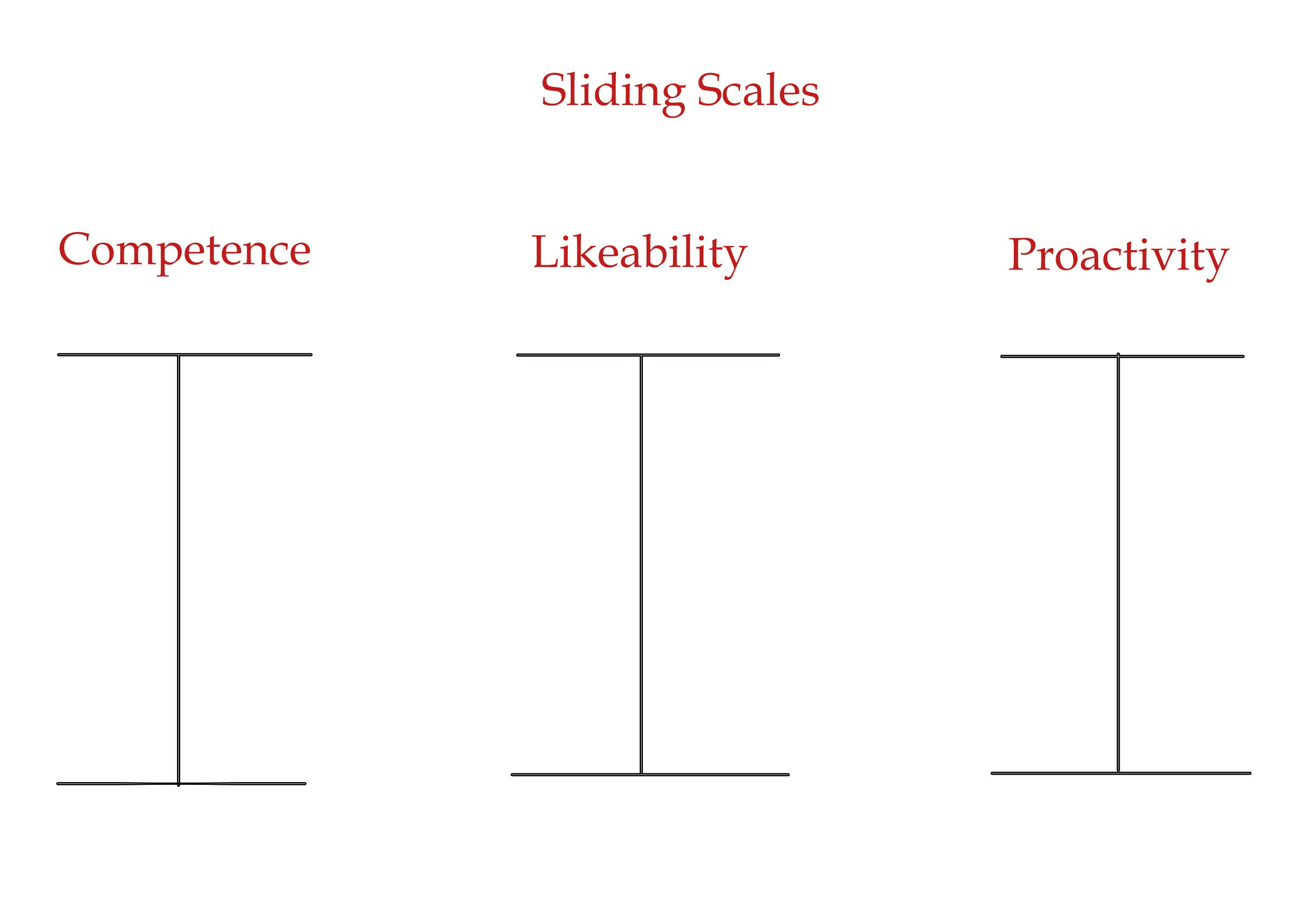
Brandon Sanderson is of the view that each character has three core features which we can measure on sliding scales: competence, likeability, and proactivity. Each scale links in with the others. Let’s take a look at an example:
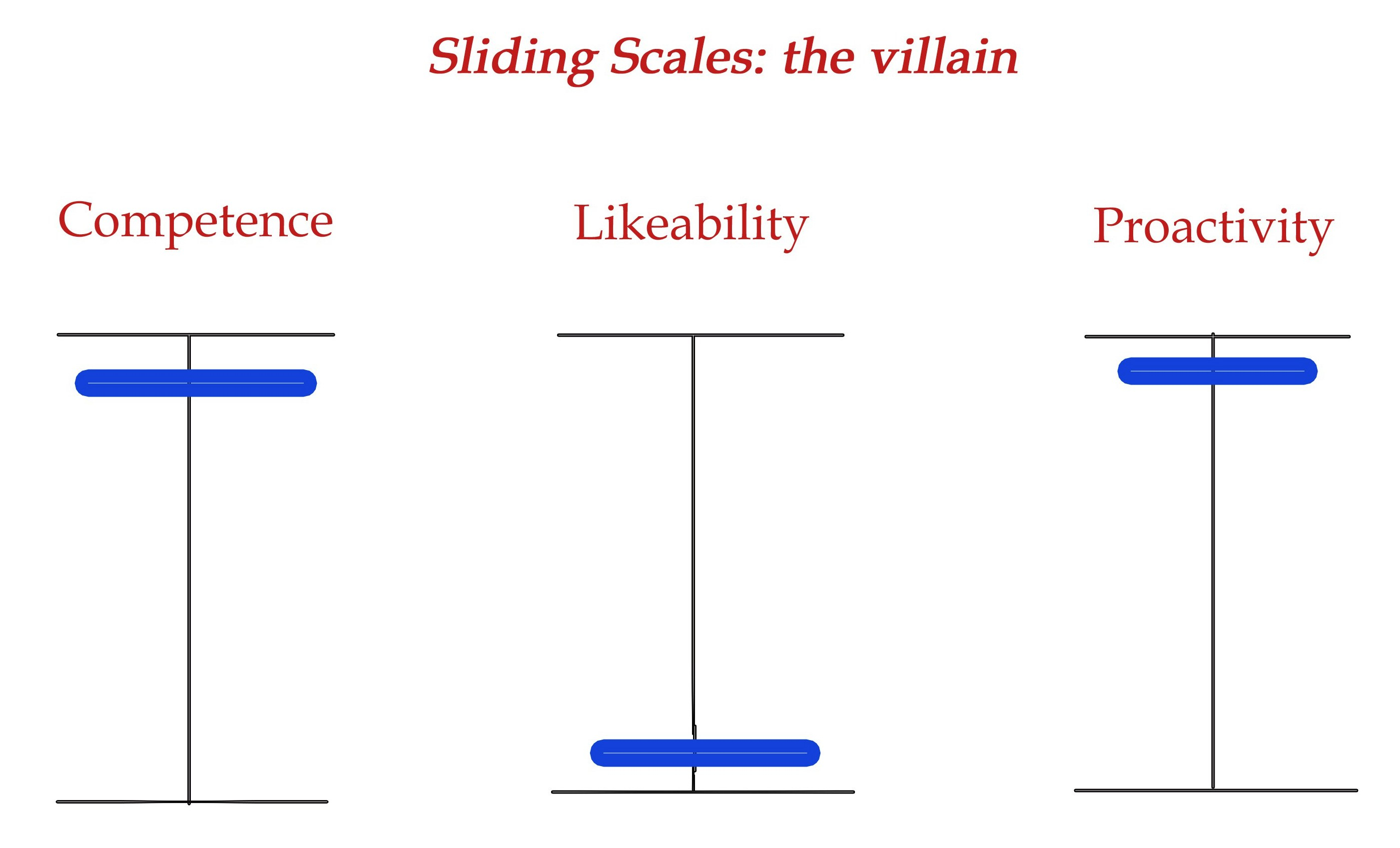
Villains tend to be competent and proactive but fall low on the likeability scale. For example, Darth Vader is hell-bent on destroying the rebels and he’s not too shabby at it.
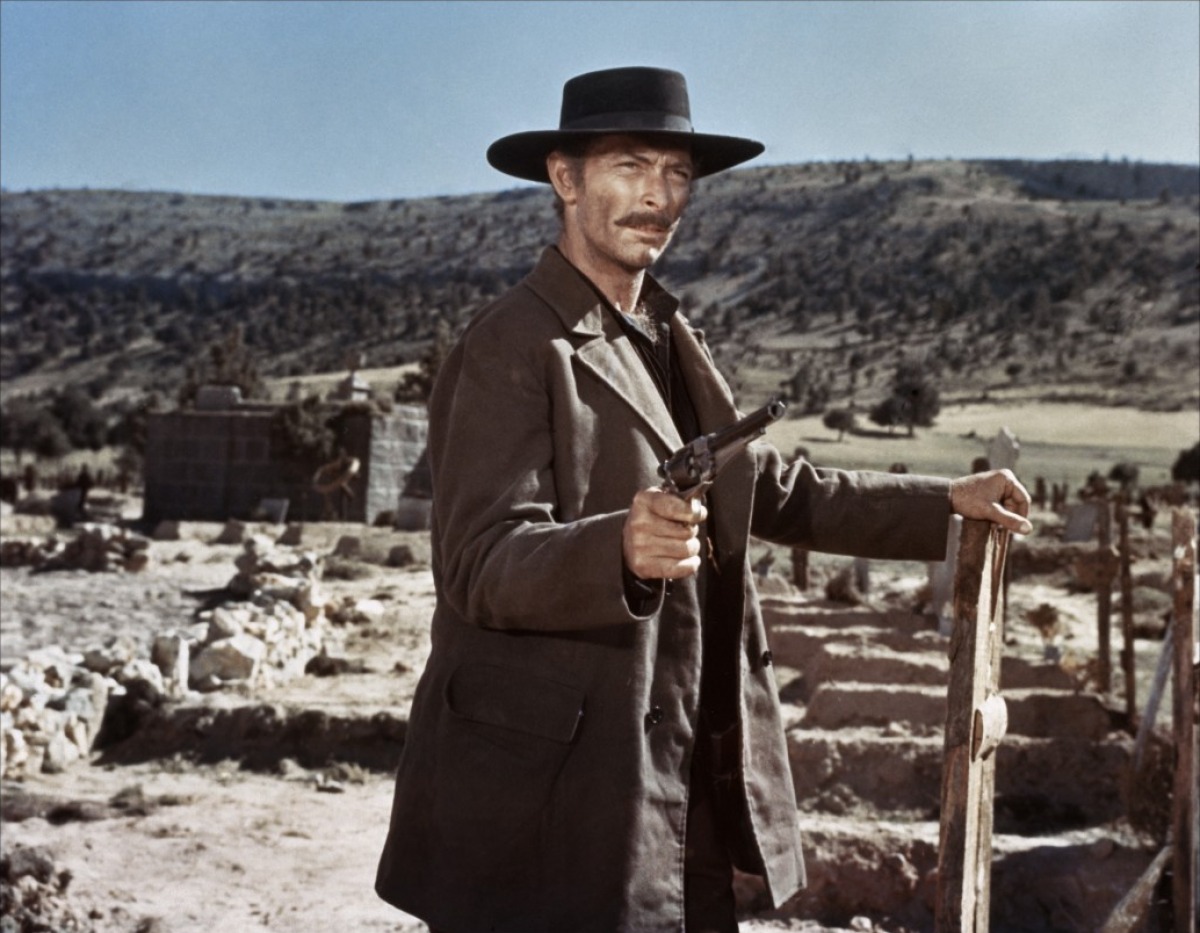
For a detailed guide on how to create antagonists and villains, head here – Tips On Writing A Villain
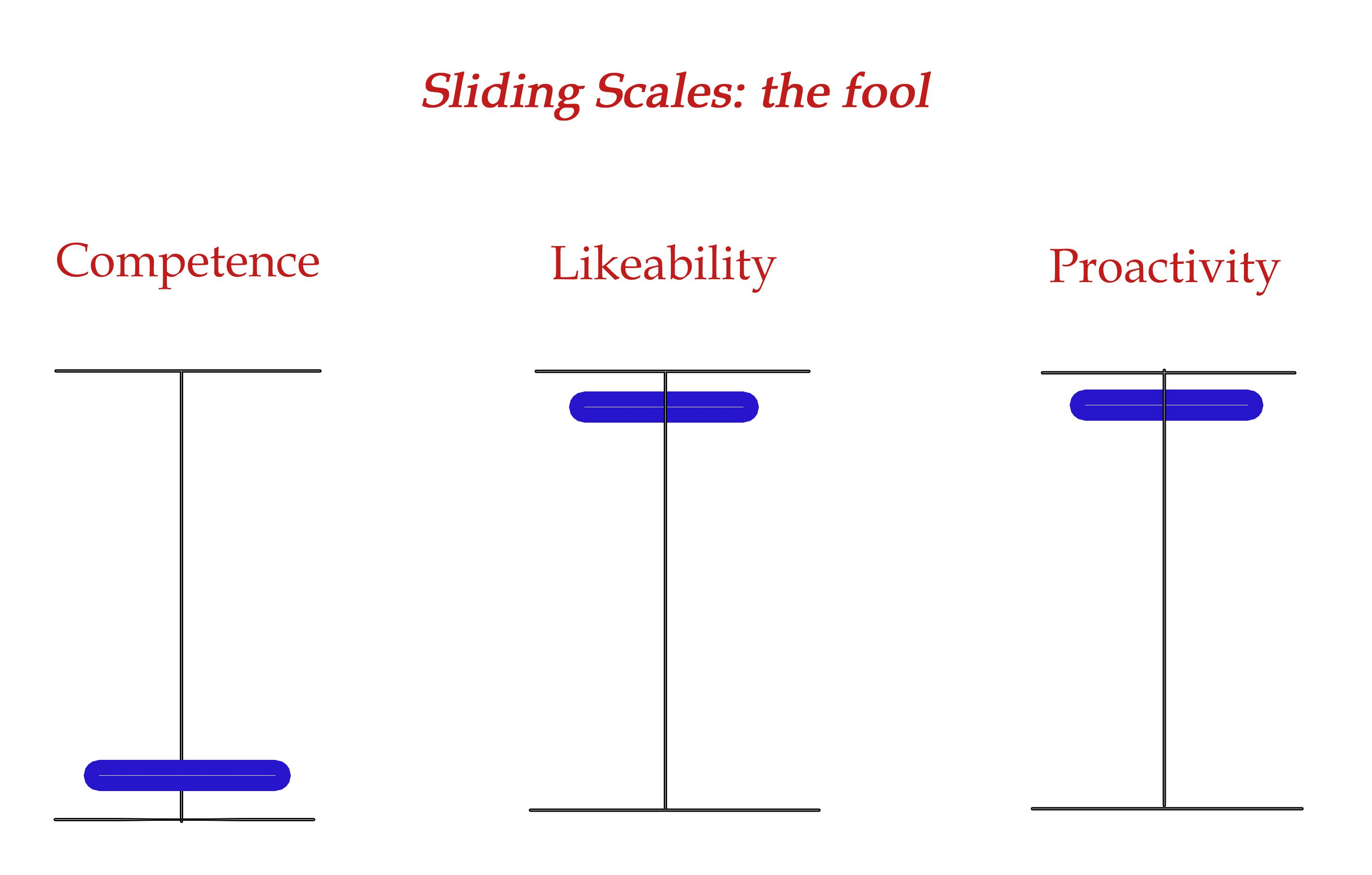
Everyone loves a trier, but as hard as they may try they never succeed or end up making things worse.
Let’s explore each scale in more detail:
Likeability
A good way to make a character likeable is to have other characters talk about them in positive ways. But strive for subtlety—what they say must have relevance to the tale.
It’s said if you want someone to like a character have them stroke a dog. If you want them to be hated, have them kick it, or worse, kill it.
Proactivity
We as readers naturally like fictional characters that move the story along, that try their best. Frodo, for example, was extremely motivated to take the ring to Mordor and didn’t stop until he got there. A reluctant character, someone riddled with fear, or who’s content with their lot, would fall low on the proactivity scale.
How can you make a character proactive?
- They may have dreams or aspirations.
- They may have an oath to keep, a promise to fulfil.
- A character may have been forced into a difficult situation, one they must get out of. For example, being enslaved or kidnapped.
- A character may have a longing to explore, to break free.
These are just a few; there are many more. See what you can come up with.
Competence
Most fictional characters tend to be competent in one way or another. There are the hapless village idiots, of course, that can’t do anything right (see ‘the fool’ scale above). Then you have characters who are competent in one particular area, like smithing or archery. And then we have our legendary heroes, like David Gemmell’s Druss the Legend, who can single-handedly defeat entire armies. But that’s not to say your average Joes can’t improve and develop some new skills. In fact, we love to see this happen. It’s a great way to grow a character (we’ll come to this shortly).
Highly competent characters tend to be likeable. We enjoy reading about a master or expert going about their business. Yes, it can get tedious, but done well it works. Over twenty movies down the line and people still aren’t bored of James Bond saving the world, massacring henchmen and blowing shit up.
Who doesn’t love watching Liam Neeson destroying half of Paris in Taken, Aragorn battling hordes of orcs, or Pug from the Riftwar Saga destroying a planet? Highly competent characters don’t always have to be likeable, like Darth Vader, as shown in the villain scale above.
You don’t have to limit yourself to these three scales. You could go into more specific detail. If you’re a fan of computer games, you could approach it like picking your character’s attributes. I love games like The Elder Scrolls for how in-depth they go with characterization.
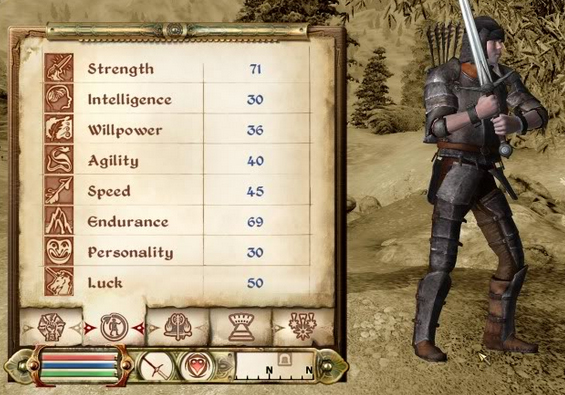
Watch My Video On Creating Characters And Characterization
If you’d like to learn more about creating characters, I’ve put together this handy video guide explaining my favorite method, The Bone Structure.
If you’d like to learn more about character arcs, the different types and discover lots of examples from fiction, head here. It’s the next step in your understanding of characterization.
More Resources On Creating Characters
I recommend dipping your nose into the book The First Five Pages by Noah Lukeman. Lukeman is one of the best literary agents in the game. He provides insights into the things to avoid as well as solutions and exercises. I’ll briefly go over a few things to avoid when it comes to crafting characters—for the solutions you’ll have to buy it!
- Don’t jump headfirst into the story without taking the time to establish the characters.
- Avoid cliché characters, like the Russian spy or the alcoholic policeman.
- Don’t introduce too many characters at once. The reader’s mind will boggle.
- Make it clear who the protagonist is.
- Make sure characters are relevant, even those on the periphery. If they’re not needed it uses up the reader’s energy.
- Be creative with character description. A unique description can enhance a story.
If you’re itching for more on character, I’ve got a few more guides you can check out:
- Great Examples of the 5 senses in writing
- 5 mistakes men make writing female characters
- How to avoid fantasy tropes and cliches
- Writing tips
- Show don’t tell examples for writers
- Hated writing rules
- How to write romance scenes
- Worldbuilding and religion
- How to format a manuscript
- Mental health in fantasy books
- 8 ways to kickstart your writing career
- How to write strong female characters
- How to edit
- What is StoryOrigin?
- How to plot a story
- What is passive voice?
- What is a boring book and how to avoid writing one?
- 4 ways to begin writing a novel
- How to plan a story
- How to plan a novel
- A guide to characterization from the Open University
Thanks for checking out this guide which looked at the question ‘what is characterization in literature?’ I hope you’ve found it useful. If you have any questions or need more help, contact me or join our online writing group!
- 5 Tips to Help Your Child Learn and Succeed at Primary School - February 26, 2024
- The Advantages Of Using An AI Essay Typer Alternative - February 14, 2024
- Advice On Getting Help With Your Homework - January 26, 2024

